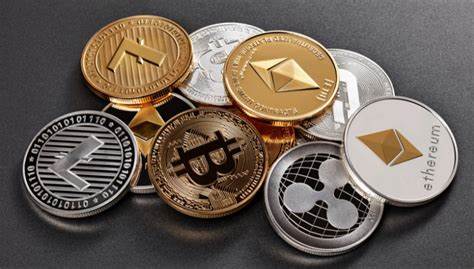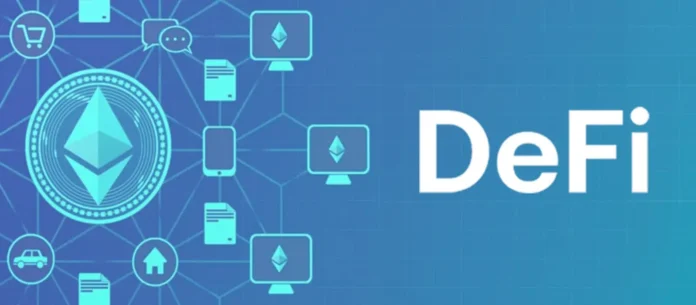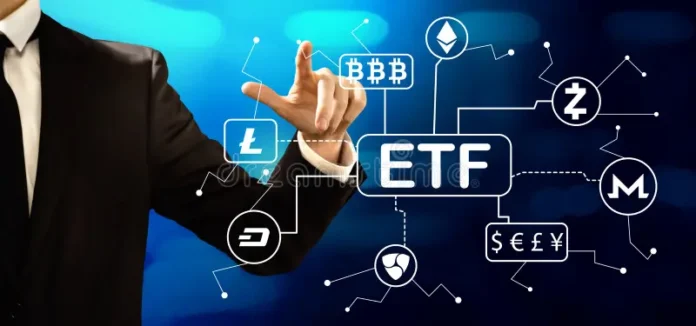Cryptocurrency ETFs (Exchange-Traded Funds) have garnered significant attention and interest in the world of finance and investing. In this guide, we’ll delve into the intricacies of cryptocurrency ETFs, exploring what they are, how they work, and their potential impact on the investment landscape. Whether you’re a seasoned investor or just starting to explore the world of cryptocurrencies, this article aims to provide you with a comprehensive understanding of this innovative financial instrument.
Table of Contents
- Introduction to Cryptocurrency ETFs
- Understanding Traditional ETFs
- The Birth of Cryptocurrency ETFs
- How Cryptocurrency ETFs Function
- Benefits of Investing in Cryptocurrency ETFs
- Considerations Before Investing
- Regulatory and Security Aspects
- Cryptocurrency ETFs vs. Direct Cryptocurrency Investment
- Analyzing Market Impact: Cryptocurrency ETFs
- Cryptocurrency ETFs and Portfolio Diversification
- Potential Risks and Drawbacks
- The Global Perspective on Cryptocurrency ETFs
- The Future and Evolution of Cryptocurrency ETFs
- Case Studies: Notable Cryptocurrency ETFs
- How to Get Started: Investing in Cryptocurrency ETFs
Introduction to Cryptocurrency ETFs
Cryptocurrency ETFs are investment funds that track the performance of various cryptocurrencies or a portfolio of crypto assets. Similar to traditional ETFs, these funds are traded on exchanges, allowing investors to buy and sell shares throughout the trading day. However, instead of holding traditional assets like stocks or bonds, cryptocurrency ETFs hold a selection of cryptocurrencies, providing investors with exposure to the crypto market without needing to directly hold and manage the underlying assets.
Understanding Traditional ETFs
Before diving into cryptocurrency ETFs, it’s essential to grasp the concept of traditional ETFs. These funds track a specific index, sector, commodity, or asset class. They offer diversification, liquidity, and the opportunity for investors to gain exposure to a wide range of assets without purchasing each individual one. This concept forms the foundation for cryptocurrency ETFs.
The Birth of Cryptocurrency ETFs
Cryptocurrency ETFs emerged as a response to the growing demand for regulated and easily accessible crypto investment options. The first attempts to introduce cryptocurrency ETFs faced regulatory hurdles and concerns about the nascent nature of the crypto market. However, as the industry evolved and gained more mainstream acceptance, regulators began to explore ways to accommodate these innovative investment vehicles.
How Cryptocurrency ETFs Function
Cryptocurrency ETFs function by holding a combination of different cryptocurrencies. The fund’s value is tied to the performance of the underlying crypto assets it holds. For example, if the selected cryptocurrencies collectively appreciate in the market, the ETF’s value will likely increase as well. Conversely, if the crypto market experiences a downturn, the ETF’s value may decrease.
Investors can buy and sell shares of cryptocurrency ETFs through brokerage accounts, just like they would with traditional stocks. This accessibility and ease of trading contribute to the popularity of these funds among investors looking to enter the crypto space without the complexities of direct asset management.
Benefits of Investing in Cryptocurrency ETFs
Investing in cryptocurrency ETFs offers several advantages. Firstly, it provides exposure to the potentially high returns of the crypto market without the need for in-depth knowledge of individual cryptocurrencies. Additionally, ETFs offer diversification, spreading risk across multiple assets. Liquidity, ease of trading, and regulatory oversight are also key benefits that attract investors.
Considerations Before Investing
Before investing in cryptocurrency ETFs, it’s important to consider factors such as the fund’s management fees, tracking error (deviation from the index it tracks), and the overall strategy of the fund. Investors should also assess their risk tolerance and understand that the volatility of the crypto market can impact the value of the ETF.
Regulatory and Security Aspects
Regulatory oversight is crucial in the world of cryptocurrency ETFs. Regulatory approval ensures that these funds comply with industry standards and investor protection measures. Security is another critical aspect, as safeguarding the digital assets held by the ETF is paramount to prevent hacking or theft.
Cryptocurrency ETFs vs. Direct Cryptocurrency Investment
Investing directly in cryptocurrencies involves purchasing and managing the digital assets themselves, which requires technical knowledge and secure storage solutions. Cryptocurrency ETFs offer a more accessible way to invest, especially for those who are new to the crypto space or prefer a more hands-off approach.
Analyzing Market Impact: Cryptocurrency ETFs
The introduction of cryptocurrency ETFs has the potential to bring significant liquidity and institutional investment into the crypto market. This influx of capital could impact the market dynamics, potentially leading to increased stability and mainstream acceptance of cryptocurrencies.
Cryptocurrency ETFs and Portfolio Diversification
Cryptocurrency ETFs can play a role in portfolio diversification by offering exposure to a new and uncorrelated asset class. Integrating crypto ETFs into a diversified portfolio may help spread risk and enhance potential returns.
Potential Risks and Drawbacks
While cryptocurrency ETFs offer numerous benefits, they also come with risks. The volatility of the crypto market can lead to substantial fluctuations in the value of the ETF. Additionally, regulatory changes, technological vulnerabilities, and market sentiment can all impact the performance of these funds.
The Global Perspective on Cryptocurrency ETFs
Different countries have varying regulatory approaches to cryptocurrency ETFs. Some nations have embraced them, while others remain cautious due to concerns about investor protection, market manipulation, and money laundering.
The Future and Evolution of Cryptocurrency ETFs
The future of cryptocurrency ETFs hinges on regulatory developments, market acceptance, and technological advancements. As the crypto market continues to evolve, these investment vehicles may become more sophisticated and accessible to a broader range of investors.
Case Studies: Notable Cryptocurrency ETFs
Several cryptocurrency ETFs have gained prominence. One example is the “CryptoTech ETF,” which tracks a diversified index of leading cryptocurrencies and blockchain-related companies. Another is the “Global Digital Asset Fund,” which focuses on offering exposure to a wide range of digital assets.
How to Get Started: Investing in Cryptocurrency ETFs
Getting started with cryptocurrency ETFs involves several steps. Investors should research and choose a reputable ETF provider, open a brokerage account, and consider the fund’s strategy and fees. It’s important to stay informed about market trends and regulatory changes that may impact the ETF’s performance.
Conclusion
In conclusion, cryptocurrency ETFs provide a bridge between traditional investing and the dynamic world of cryptocurrencies. These funds offer a regulated, accessible, and diversified way for investors to participate in the potential growth of the crypto market. However, like any investment, thorough research and consideration of risk factors are essential before diving in.
FAQs
1. Are cryptocurrency ETFs the same as traditional ETFs? Cryptocurrency ETFs and traditional ETFs share similarities in structure but differ in the assets they hold. Cryptocurrency ETFs hold digital assets, while traditional ETFs track stocks, bonds, or commodities.
2. Can I buy cryptocurrency ETFs with regular brokerage accounts? Yes, you can buy and sell cryptocurrency ETFs through regular brokerage accounts, making them easily accessible to a wide range of investors.
3. What are the main risks associated with cryptocurrency ETFs? The main risks include market volatility
Advertisement











